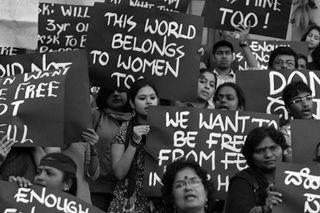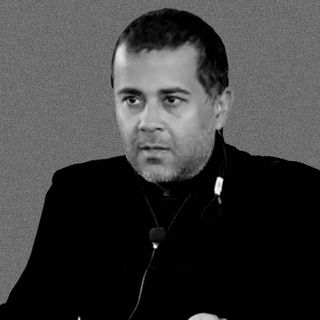
#MeToo Has Unleashed Women’s Pent Up Rage, At Last
“The truth is, angry women get things done.”

It’s been almost a week since India kicked its second round of #MeToo — a week of revelations that have hit too close home. As cathartic as this moment of reckoning is in the long run, it has also opened up the wounds trauma.
Women are angry at the ‘unspeakable’ truths that they have all had to endure for years in repressed silence. Many have lived through abuse personally — most, vicariously. They have all seen a friend, a colleague, go through unsolicited male attention way too often. For years, it has been so normalized that they don’t even think about it often. Armed with humor and stealth, most of them have become master deflectors, learning fast that one must negotiate their way around toxic male behavior as subtly and as quickly as possible.
In a patriarchal country that perpetuates rape culture, it is far easier to stay quiet than to speak up.
Of course, there have been disruptors, once in a while, women who challenge the status quo and call out the harassment for what it is. But this has been rare, because in a patriarchal country that perpetuates rape culture, it is far easier to stay quiet than to speak up.
Therefore, it is no surprise that when some women are finally talking about the harassment they faced, many other women feel triggered at the normalization of it all — how common and commonplace the onslaught is. Amid this, it can be isolating to be a woman, sometimes. At the same time, this gendered isolation can be felt as a collective. In almost all the separate conversations I have had with my friends and colleagues in the past one week, the topic has been singular — anger and rage.
The emotional cost of collective trauma is manifold, but it is clear that for the average woman, the most singular emotion stemming out of the #MeToo movement is rage. Rage at having to put with systemized oppression for years, anger that they didn’t speak up earlier, rage at the women in senior positions who condoned this behavior, rage at the people trivializing this movement and still trying to disparage it — rage at having all this rage while with no outlet for it for a long time.
Anger in a woman is viewed as an abnormal trait that must either be rectified, ridiculed or lulled to sleep.
Two years ago, I chanced upon The Subtext of Anger, a documentary film by Vandana Kohli on the many emotional and psychological costs of living an angry life. The filmmaker who was present at the screening at the time stated that she made the movie after dissatisfaction in living in a particular environment in which she felt constantly threatened. It led her to examine what happens when you live in an angry society.
The costs of rage or anger are many, from hypertension to behavioral changes, the functioning of your gut, how you digest your food, to even your brain and your responses to life — anger becomes the driving force that disrupts the central nervous system and eventually destroys you both mentally and physical.
When women get angry, they try and hide it. Keeping Durga and Kali aside, outside of mythology, Indian society doesn’t leave much room for women to display any kind of rage. Traditionally, women are to be compliant, beautiful and silent. The idea of them expressing their true self — and that, too, in a manner that might disrupt the patriarchal status quo — is something that is met with routine disapproval.
A woman’s anger is therefore seen as something that is not normal, or as “hysteria,” originating from the Greek word, hystera, which literally translates into “womb.” Originally, the word was used to denote a pathology to which women were exclusively susceptible. It is no surprise that even today, anger in a woman is viewed as an abnormal trait that must either be rectified, ridiculed or lulled to sleep. This is the reason why feminists are routinely tone-policed and the image of the ‘hysterical angry feminist,’ is widely perpetuated in popular culture as a modern day shrew.
The truth is, angry women get things done.
Can you then imagine the cost of such silent rage? It is surely deadly, but when channeled as a collective force, it can be transformative. In her book, Good and Mad, Rebecca Traister argues that “it’s crucial to remember that women’s anger has been received — and often vilified or marginalized — in ways that have reflected the very same biases that provoked it.”
The truth is, angry women get things done. If women were not collectively angry, there would be no women’s rights and even less chance of an equal society. Therefore, in the face of #MeToo, it is crucial to express this anger and talk about it; the only way to move past this rage and into catharsis is through converting all this pent-up emotion into positive action that breaks this cycle of inter-generational gendered trauma once and for all.
Got feelings about #MeTooIndia? Let them out by taking our survey.
Gunjeet Sra is a writer and columnist based out of New Delhi, who writes about gender and politics. She is also the co-founder of Subculture Media and the editor of sbcltr.in, a counterculture website aimed at empowering marginalized narratives.
Related


India’s #MeToo Apologies Are Rolling In. Do Any Warrant Forgiveness?
